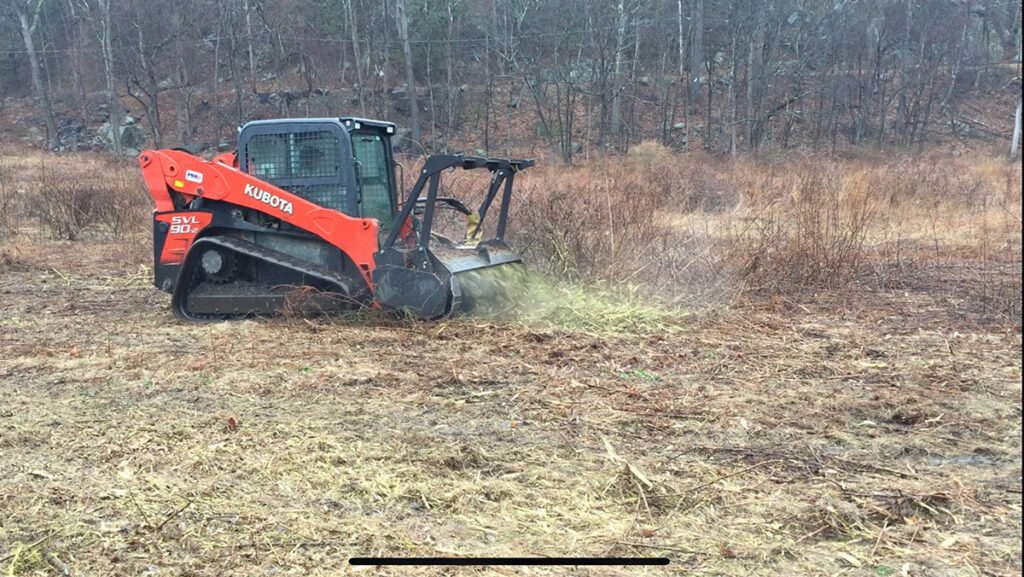Invasive Plants: What can you do to slow the spread?
What’s an invasive plant?
An invasive plant is one that was “introduced by humans and has spread rapidly, causing measurable negative socioeconomic or ecological impacts,” according to scientist Evelyn Beaury. Chances are you’ve come across non-native barberry (Berberis thunbergii), Miscanthus sinensis, mugwort, phragmites, round leaf bittersweet, multiflora rose, stiltgrass, to name just a few, in nearby woods, fields, roadsides—or even your local nursery. These plants are also one of the major drivers of our biodiversity crisis, crowding out native plants and dominating the ecosystem. To learn more about invasive plants and how to reduce the spread, we’ve compiled some resources:
All About Invasives
Learn about the latest research on invasive plants and what you can do to help. Spoiler alert: One simple solution is not to buy and plant them in the first place.
A Dirty Dozen: 12 Invasive Plants to Avoid (and What to Grow Instead)
Experts share the fabulous native plants to grow instead of common invasive plants.
Ask the Experts: How Do You Reduce Invasive Plants Without Using Herbicides?
Presenters from our Managing Invasives symposium share seven ways to reduce them without using harmful chemicals.
Listen to Growing Greener‘s podcast with Dr. Evelyn Beaury: Who’s Promoting the Spread of Invasive Plants?
Dr. Eve Beaury’s research reveals the outsize role American gardeners still play in supporting the propagation and spread of plants that are known to be invasive.
Managing Invasives: Mindful Ecological Approaches
On May 7, 2025, we presented a day-long symposium Managing Invasives: Mindful Ecological Approaches. Through panels and presentations, the experts shared how to manage invasive plants without chemicals including techniques like timed cutting, solarization, steaming, smothering, goats, and more. Order access to the video to watch the full symposium.
For further exploration, here are some sources shared by our experts at the symposium:
Ashley Gamell of Studio Hopeland Ecological Landscape Design, who used smothering to contain the mugwort on her property, recommends the following:
- Tokachi Millennium Forest by Midori Shintani, Dan Pearson (Filbert Press, 2021) for inspiration and information about natural recruitment and how to steer the process for aesthetic impact.
She also notes some mugwort fact sheets that discuss mixed results of chemical control and management options:
- And here is a study on mugwort showing that success with chemical control is not guaranteed and requires multiple applications.
Claire Davis of Starflower Gardens and Mia Wendel-DiLallo of Seedhead Gardens, who both practice timed cutting to control mugwort, recommend the following:
- Hudsonia’s Best Management Practices for Priority Invasive Species in the Lower Hudson Valley about managing invasive species without herbicides
- From the Hudson to the Taconics: An Ecological and Cultural Field Guide to the Habitats of Columbia County, NY, by The Hawthorne Valley Farmscape Ecology Program and Hudsona Ltd.
Budd Veverka of Mianus River Gorge, Inc. talked about his use of torching to control invasive plants. Here are some pdfs he referenced during his presentation:
- Woody Invasives of the Great Lakes Collaborative on Directed Heating and Spot Burning
- Controlling an Invasive Shrub, Japanese Barberry(Berberis thunbergii DC), Using Directed Heating with Propane Torches by Jeffrey Ward and Scott Williams in Natural Areas Journal
- Propane Flaming as a New Approach to Control Mediterranean Invasive Weeds by Alon Horesh, Yaakov Goldwasser, Karam Igbariya, Zvi Peleg, and Ran Nisim Lati in Agronomy
- Vegetation Control Using Directed Heat Treatment in The Connecticut Agriculture Experiment Station




